By Stephanie García, Ph.D. • IDRA Newsletter • August 2022 • 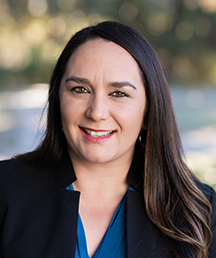

A learning ecosystem harnesses unique collaborations in symbiosis to deliver equitable STEM learning for all children. A STEM Learning Ecosystem encompasses schools; community settings, such as after-school and summer programs, science centers and museums; and informal experiences at home and in a variety of environments that together constitute a rich array of learning opportunities for young people. There are designated STEM Learning Ecosystems across the world, with a large presence here in the United States.
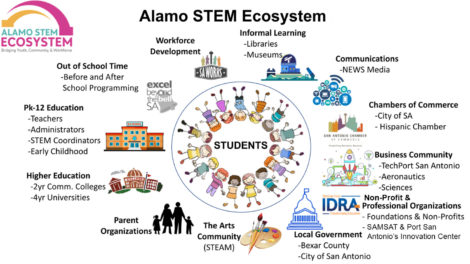

IDRA currently leads the Alamo STEM Ecosystem. As IDRA’s STEM and gender equity education associate, I bring in IDRA’s asset-based philosophy and collaborate with ecosystem community partners to focus on equity and innovation through all current projects and initiatives. We align and connect efforts to strengthen and broaden participation in the local STEM pipeline (from cradle to career), and we center and elevate student and family voices for improving students’ access and sense of belonging in informal and formal STEM education.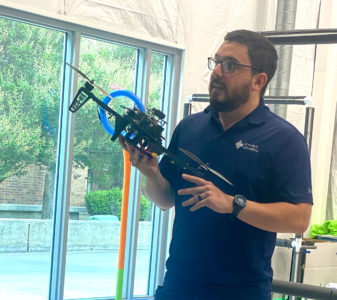

Industry, educators and students can learn so much from each other. We see this in action at the monthly Alamo STEM Ecosystem networking meetings (open to all) and its annual education conference (the next one is on February 11, 2023). The image below is from a demonstration to a group of STEM educators and professionals who were learning about STEM research, degrees and careers in aviation (drones specifically), computer science, biomedical engineering, structural engineering and mechanical engineering.
As the ecosystem recently led a tour of the St. Mary’s University campus, many “light bulb” moments happened, especially regarding ways to bridge youth, community and workforce. Discussion items included summer camps, field trips, guest speakers, student-led projects, competitions, internships and mentors. Participants took multiple action items back to their respective organizations and institutions, as well as to Alamo STEM Ecosystem working groups and initiatives.
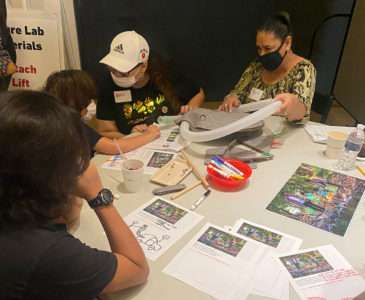

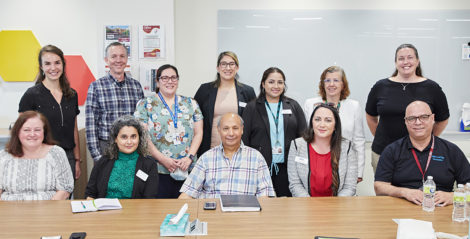

[Standing L-R] Nicole Racine, Strategic Analysis Incorporated; Dr. Cliff Zintgraff, San Antonio Museum of Science and Technology; Anna Olguin, San Antonio ISD; Erron Gonzalez, Palo Alto College; Ashley Aguilar, Palo Alto College; Dr. Marianne Phillips, Texas A&M University – San Antonio; Julie Stolzer, TIES Ecosystem. [Seated L-R] Rebecca Stanley, RTI International; Vanessa Jimenez, St. Mary’s University; Dr. Rudy Reyna, founder of the Alamo STEM Ecosystem; Dr. Stephanie Garcia, IDRA; Javier Uribe, Edgewood ISD.
San Antonio is ranked Number 2 in the country for cybersecurity, so its STEM Ecosystem offers relevant formal and informal learning opportunities and experiences for students. For example, Alamo STEM Ecosystem members met recently with the Defense STEM Education Consortium and the Department of Defense STEM to discuss areas of growth at the Palo Alto College STEM Center (pictured below). The consortium shared helpful resources and ideas for potential collaborations.
If you are interested in connecting with the Alamo STEM Ecosystem and being added to its email list, contact Dr. Stephanie Garcia (stephanie.garcia@idra.org). Learn about events at AlamoSTEMecosystem.org/Events. You can find a STEM Ecosystem in your area at STEMecosystems.org.
Stephanie García, Ph.D., is IDRA’s STEM and gender equity education specialist and directs the IDRA VisionCoders program. Comments and questions may be directed to her via email at stephanie.garcia@idra.org.
[©2022, IDRA. This article originally appeared in the August 2022 issue of the IDRA Newsletter by the Intercultural Development Research Association. Permission to reproduce this article is granted provided the article is reprinted in its entirety and proper credit is given to IDRA and the author.]


